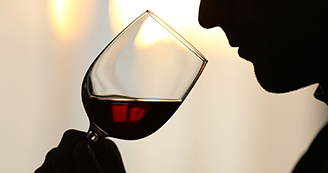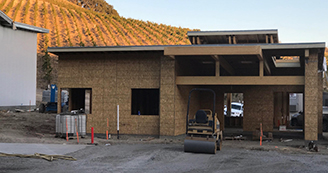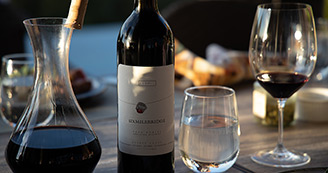2019 Harvest
At this time of year, there is nothing more important than Harvest.
Our harvest kicked off on September 3rd with our Sauvignon Blanc. That’s about two and a half weeks later than last year.
The generous rainfall in the early part of the year, coupled with generally milder temperatures and less heat spikes, gave us more hang time in the vineyard. And despite a two week later start to the harvest as described above, we picked the last fruit on October 16th, only a few days later than last year. So you could say that we mostly caught up with last year by the time harvest concluded.
Here is photo of the crew with Hillary Yount, our vineyard manager, right after completing the Sauvignon Blanc pick.
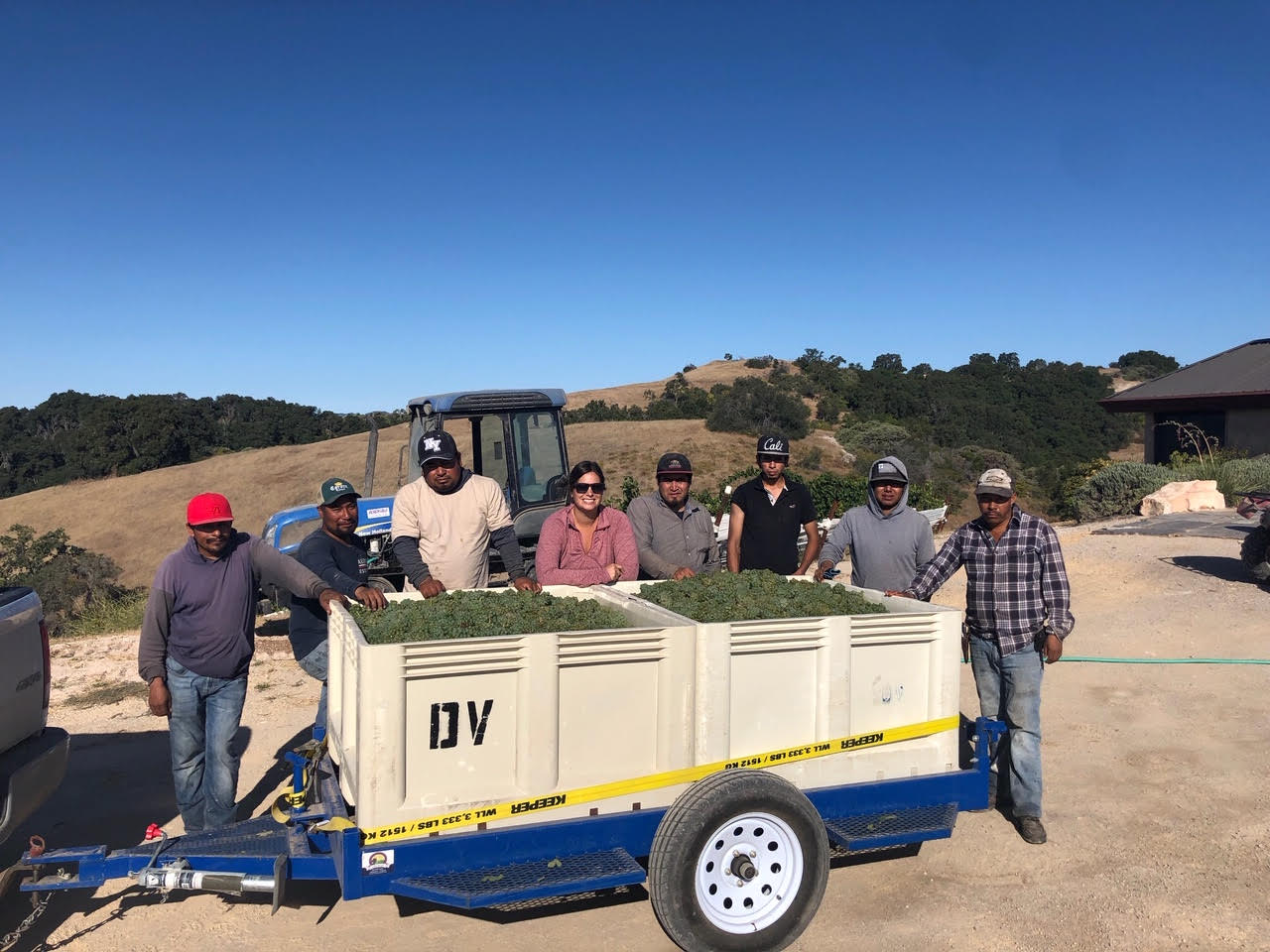
The fruit looked wonderful and Anthony thought the flavors were exceptional. We got a bit more yield this harvest than we did in 2018. As has been the case with every harvest, and this one is no exception, we have good acidity in all of our fruit (geek alert: ph averages 3.4 across all of our red varieties) and so we anticipate that 2019 will have good age-ability just as our previous vintages.
Given the extremely good growing conditions of this season and more time for Anthony and Hillary to learn the site and work with the fruit, along with a higher yield this year, means 2019 should give us more opportunities for some exciting and different blends, as well as some really special single varietal wines. And along that line, there is one fun thing we are doing this year.
We are fermenting the merlot in three different vessels: a stainless tank, a wooden foudre and an amphora.
You’ve all seen stainless steel fermenting tanks.
You might not have seen a foudre. Here ours:
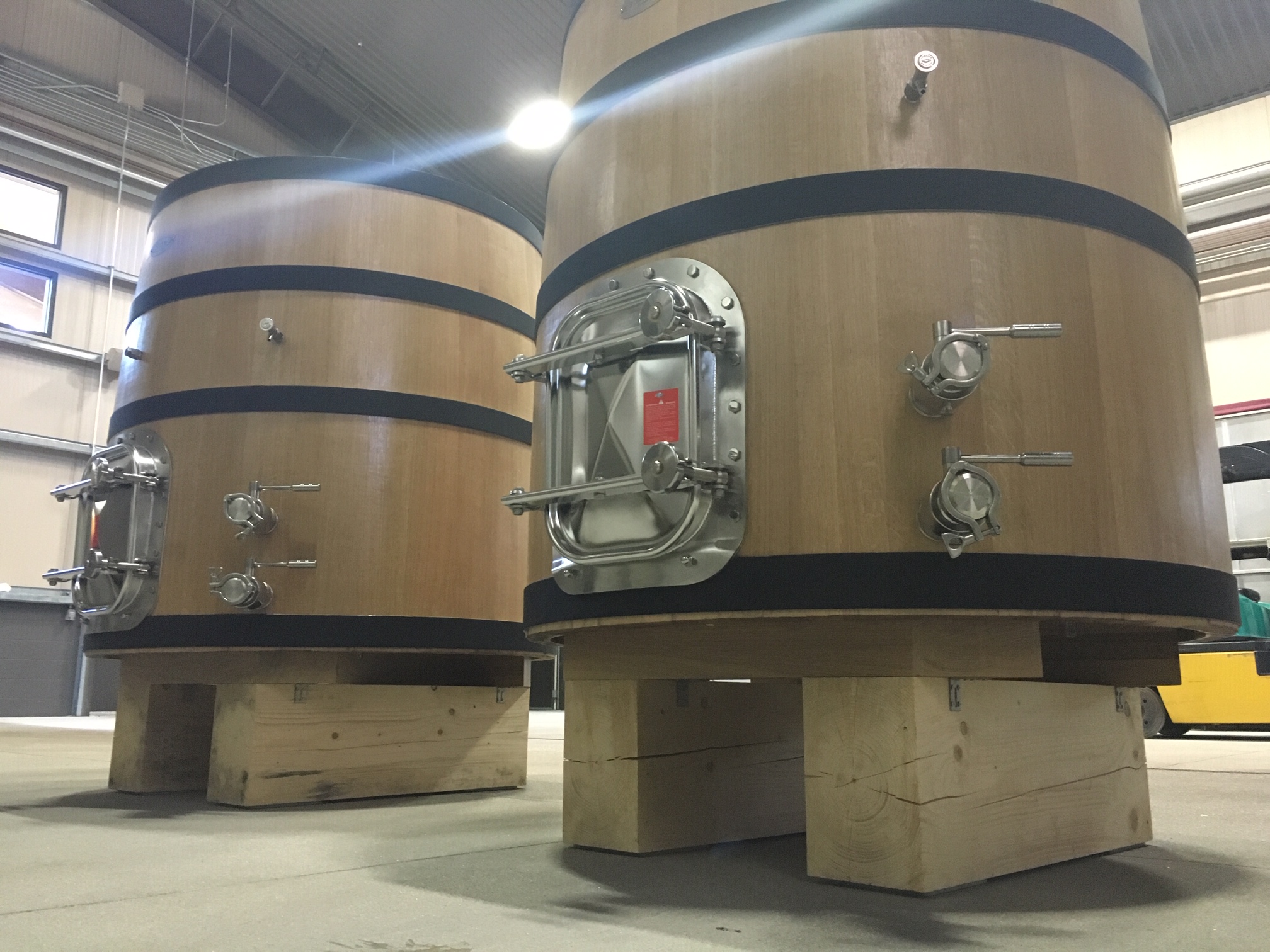
The benefit of this vessel is in its thermal capacity - it makes for long, warm fermentations - creating richness and texture in the finished wine.
You may also not be familiar with an amphora. See below. That’s Anthony, our winemaker, on the left. The amphora is on the right.
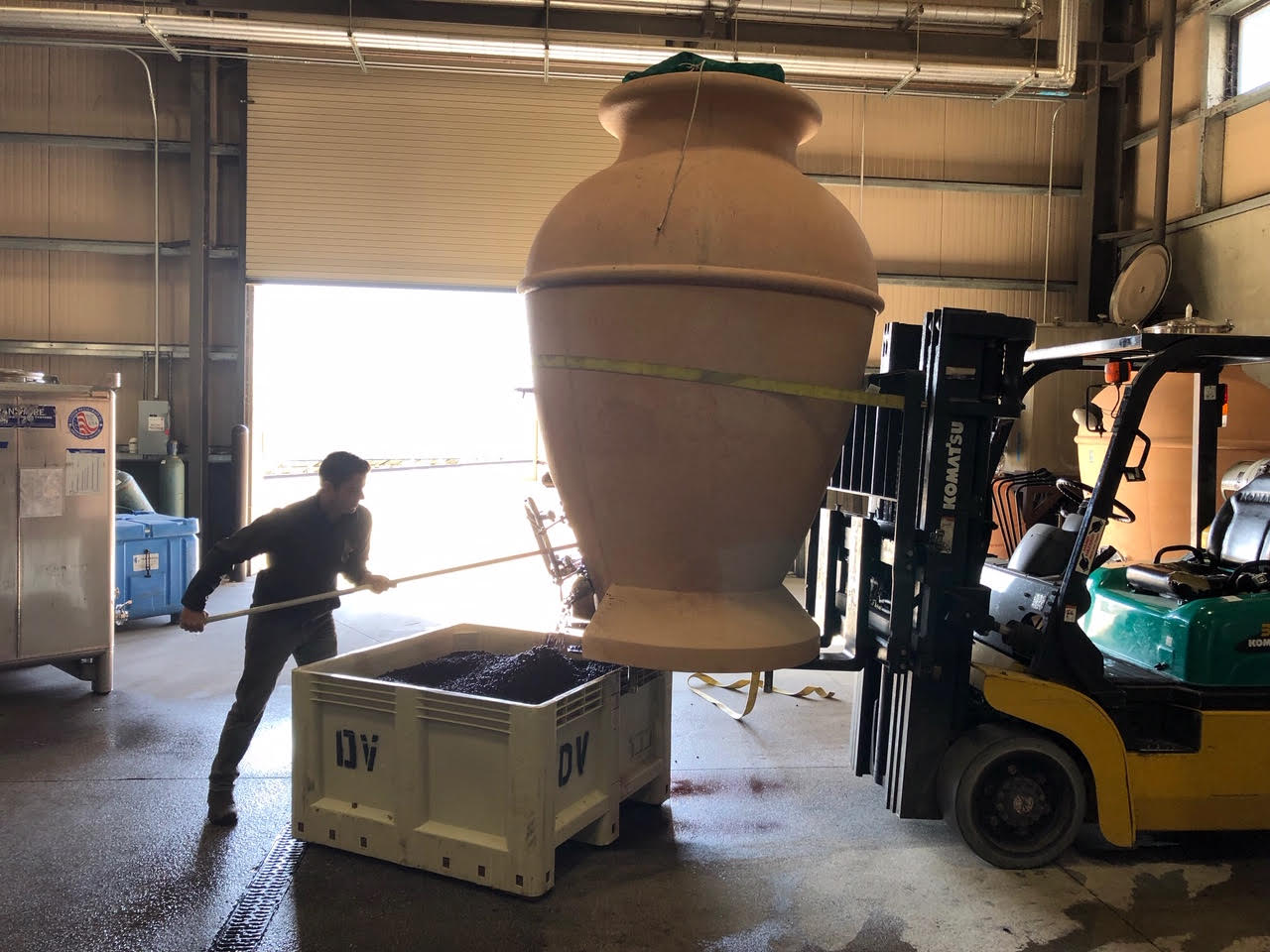
The history of when an Amphora was first used in winemaking is much debated; yet, it seems generally agreed upon that it can be traced back to at least 2,000 B.C., when it was used as a transportation vessel for wine in the eastern Mediterranean.
Our amphora is not all terra-cotta like many amphoras being used for winemaking today. Ours is actually called a cocciopesto, which is an ancient Roman building material. The manufacturer describes is like this: The patented mixture is made of small fragments or “cocci” of crushed terra-cotta, stone, sand, de-chlorinated water and small quantities of a natural binding material.
These three fermenting vessels should impart different profiles to our merlot, giving us lots of opportunities for experimenting in the blending process. Perhaps we will find a merlot profile we like so much that here on the 20th anniversary of the movie “Sideways,” we will make a single varietal Merlot and try to help restore some of the luster Merlot deserves. After all, one of the most proclaimed and most expensive wines made in Bordeaux year-after-year, Chateau Petrus, is mostly or all merlot depending on the vintage.

